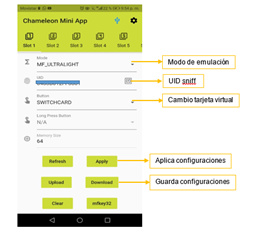Amal, I told you about the investigation.
Configure the implant with NFC Shell, and perform some tests:
First test:
I established a scenario for access control, with an ARDUINO ONE and a PN532, it works correctly. Configure the AUTH0 = 00 and the PROT = 1 in the implant, the access control worked correctly, it is possible to read the UID of the implant without any authentication.
B1password
A2E3 04 00 00 00
A2E4 80 05 00 00
With a device called Chameleon mini I managed to clone the UID of the implant with a function called snif UID, I managed to detect the UID without requesting an authentication. With this device, I mock the access control.
Second test:
I established a scenario, in which the implant has stored information, I protected the implant with AUTH0 = 00 and PROT = 1. I thought the result was great, no APP (NFC Tool, TagWritter, NFC Tasks) managed to read or write on the implant , all of them gave me a reading error and I was surprised that no one asks for an authentication, it just shows me the reading error or it just does not detect anything. Even ARDUINO has some scrips developed for reading NTAG2xx and I can not read it either.
Third test:
Change AUTH0 = 04 and PROT = 1, and the scrip of ARDUINO read until page 03, then only unidentified values appear
Could you explain me a little because if you can read the UID when you set, AUTH0 = 00 and PROT = 1?
In other related topics you talk about the password, could you help me understand how that works, I want to achieve password hack of my implant, how do I do it? What use? Which reader has a password verification?


